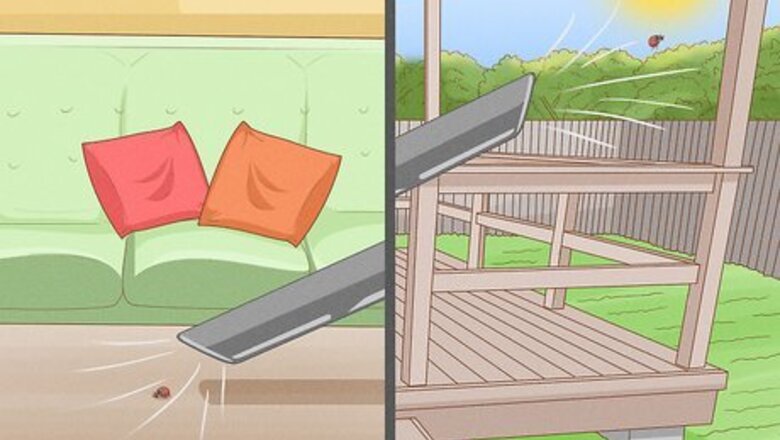
views
- Vacuum up ladybugs by placing a sock or stocking over a hose attachment. Remove the sock from the hose outside to release the ladybugs into your garden.
- Make a trap by cutting a plastic bottle in half and setting an LED light inside. Set the inverted top into the bottom and place it in a dark area where you see ladybugs.
- Prevent ladybugs by adding weatherstripping around doors and windows, caulking up cracks and holes, and repelling them with citronella candles.
Removing Ladybugs in the House
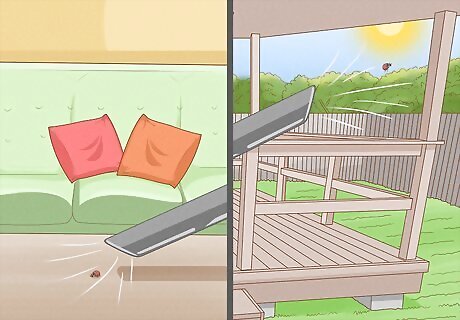
Vacuum up individual ladybugs then release them outside. You don’t need anything more drastic than a vacuum cleaner when you see ladybugs in your home. Simply place a hose attachment onto your vacuum and place a sock or stocking on the end of the hose. Vacuum up each ladybug you spot, then take your vacuum outside and remove the sock to set the ladybugs free. Ladybugs are beneficial insects, so don’t kill them when possible. They eat lots of pests like aphids that damage plants, vegetables, and fruits. While it’s annoying to have ladybugs infesting your house, they’re not harmful. They don’t eat wood, food, or clothes and rarely bite when they’re threatened. Their greatest nuisance is releasing yellow blood that can stain your walls, furniture, or clothes.
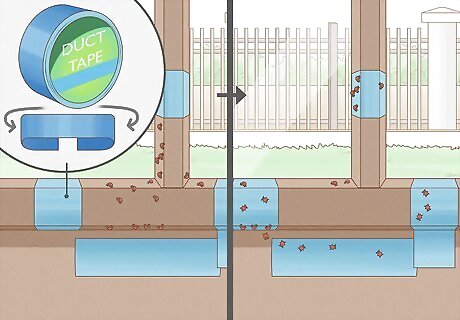
Use pieces of tape to catch roaming ladybugs. For hard to reach ladybugs, just place rolled-up pieces of duct tape near them. When they walk over the tape, they’ll get stuck. Just check on the traps often, remove them when they’re full of ladybugs, and take them outside to release the ladybugs into your yard. For a more direct approach, wrap a piece of tape around your finger. Then, gently press the tape against any ladybugs you find and release them back outside.

Make a DIY light trap to capture ladybugs in dark areas. If you notice that a dark area like a cupboard or the attic has a ladybug infestation, use light to trap them. Just cut a 2-liter plastic bottle in half and place an LED light in the bottom piece. Then, turn the top piece upside down and set it inside the bottom to create a funnel. Simply place the trap where you see ladybugs and turn on the light. Check on your trap regularly to see if you’ve caught any ladybugs. When you have, simply take the trap outside and open it to release the ladybugs. Ladybugs are attracted to light. When they see the light, they fly towards it but instead fall into the trap. They can't get out until you release them. If you don’t want to make your own trap, buy a commercial light trap.
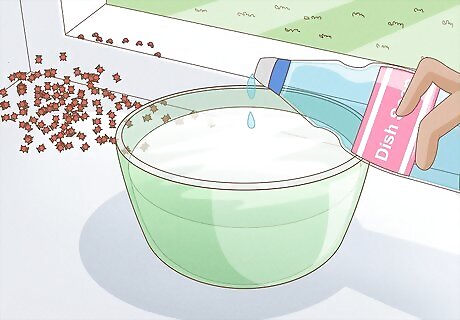
Add dish soap and water to a bowl to trap and kill ladybugs. If you’re dealing with a lot of ladybugs, use this method to get rid of them in batches. Just fill a small bowl with water and a few drops of dish soap. Then, place the bowl in an area full of light, like next to a window or a bright lamp. Ladybugs are drawn to light, so they’ll land in the water and drown. The dish soap removes the surface tension of the water, which makes it harder for the ladybugs to escape.
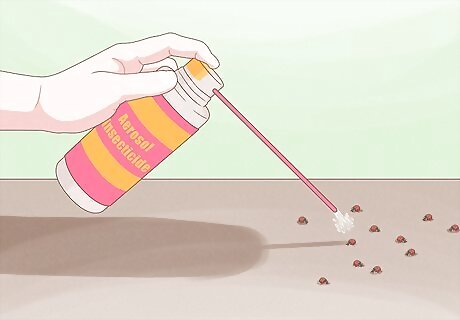
Use an aerosol insecticide to kill large indoor infestations quickly. Read the insecticide’s label and manufacturer's directions carefully before you use the product. Then, aim the nozzle at the ladybugs and hold down the spray trigger to kill the ladybugs on contact. Check that the product is designed for ladybugs and indoor environments before you buy it. Always follow the safety directions on the label, such as wearing gloves and a respirator so you don’t inhale the fumes. Once the ladybugs are dead, vacuum or sweep them up.
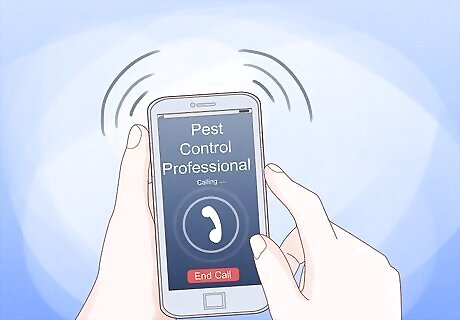
Hire a pest control professional if the infestation is too difficult to manage. While severe ladybug infestations are rare, sometimes an infestation keeps returning despite everything you do. In these instances, it’s best to contact a professional exterminator. This saves you time and prevents the infestation from growing.
Preventing Ladybugs from Getting Inside
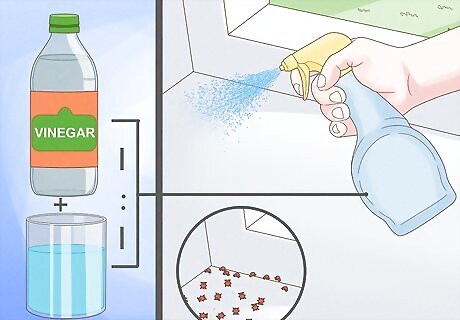
Spray a vinegar solution on surfaces where you’ve seen ladybugs. Ladybugs release pheromones that alert other ladybugs to their location, causing more to invade your home. To get rid of their signal, pour 1 part white vinegar and 1 part water into an empty spray bottle. Then, look around your home and generously spray all of the surfaces where you’ve seen ladybugs moving. White vinegar neutralizes the pheromones that ladybugs release. The vinegar spray is also a natural insecticide that kills ladybugs on contact.
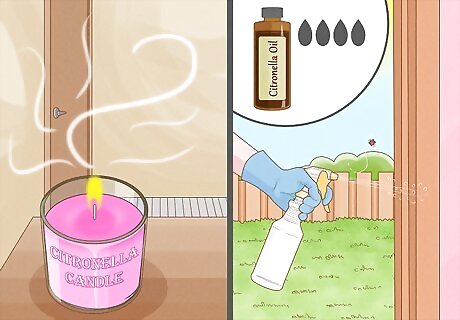
Use citronella candles and citrus oils to repel ladybugs. Ladybugs don’t like the smell of citronella or citrus, so use these scents to your advantage. Simply place citronella or citrus-scented candles around the entrances to your home when you have the doors or windows open. Or, place several drops of citronella oil or citrus oil into a spray bottle filled with water and spritz each entrance daily. Citrus oils like lemon, lime, orange, or mandarin are great scents to use.
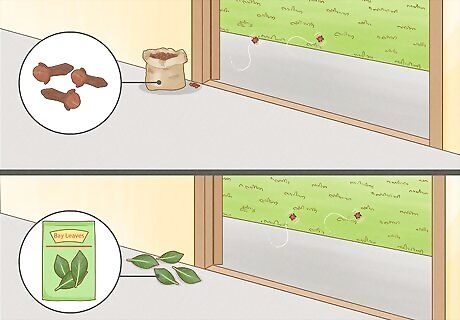
Place a bag of cloves or bay leaves around entrances to deter ladybugs. Ladybugs also don’t like the smell of cloves or bay leaves, making them great, natural repellents. Focus on the entrances that come from your garden or heavily-planted areas, as these are where ladybugs tend to congregate. Then, get a small plastic bag and fill it with cloves, bay leaves, or a mix of both. Simply drop the bags on the floor to repel ladybugs that come close to your door.
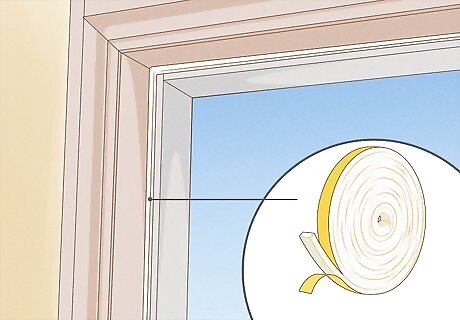
Place weatherstripping along entrance seals to minimize openings. Ladybugs tend to come inside during the winter for warmth and to find a safe place to hibernate until spring. Simply use a peel-and-stick roll of weatherstripping and cut strips that are the same size as each door or window seal. Then, remove the backing and stick the adhesive side onto each interior seal. Weatherstripping is also great for keeping water and cold air out of your home. If you’ve already added weatherstripping and are finding ladybugs in your home, you might need to replace it. Weatherstripping wears out over time.
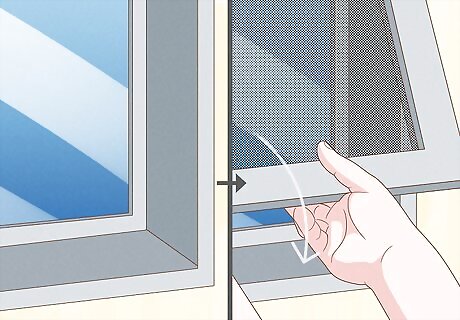
Install window screens to keep ladybugs outdoors. Measure the size of your windows and find pre-made window screens at your local home improvement store. Then, install each screen on the inside of your home by simply sliding it into place, starting from the top of the window. Make sure that the pressure clips lock to keep the screen secure. If the screens on your windows or doors are torn, repair them with clear nail polish, or sew the tear together. Alternatively, get your window screens made-to-measure and professionally fitted.
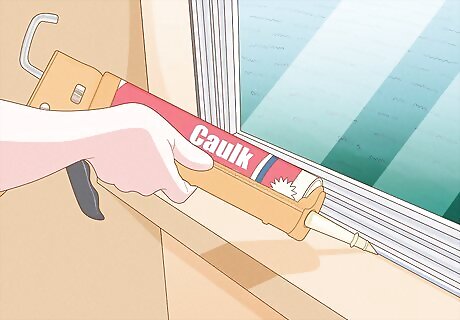
Caulk small openings around your house to block bugs from entering. Sometimes, ladybugs get inside through tiny cracks and holes. Look for their potential entrances around your utility pipes, foundation, door and window frames, and exterior walls. Then, apply the caulk into each crack and opening.
Getting Rid of Ladybugs Outside

Sprinkle diatomaceous earth around the perimeter of your yard. Food-grade diatomaceous earth is an effective way to kill ladybugs before they enter your garden. It works by dehydrating the ladybugs, killing them once they touch it. To apply diatomaceous earth, put on goggles and a respirator mask. Then, generously spread the diatomaceous earth around your yard or garden beds. Diatomaceous earth is safe for pets and children. However, it can kill other beneficial insects like honeybees. The goggles and face mask are only to prevent you from inhaling the powder as it settles. Once it has settled, you can remove your safety gear. If the ladybugs are getting inside, sprinkle diatomaceous earth around the outside of your doors, windows, and other entrances to get rid of them.

Plant mums around your yard or garden to repel ladybugs. Preventing ladybugs from getting into your plants and home is as simple as doing some gardening. Ladybugs don’t like the smell of mums, so plant several in the ground or in pots around your garden. If the ladybugs are getting inside, place the mums on your front or back porch near your doors, or place them in window boxes. Care for your mums by planting them where they get full sun and watering them when the top 2-3 inches (5-8 cm) of soil are dry.

Use an outdoor insecticide if the infestation is difficult to control. Find an outdoor insecticide at your local gardening center and check the label to make sure it’s safe for pets, children, and plants. Then, read and follow the manufacturer’s directions to apply it. Always wear gloves, a face mask, and goggles when spraying an outdoor insecticide. Most outdoor insecticides are dusts, powders, or sprays. Instead of directly killing the ladybugs, get rid of aphids in your yard. They are a food source for ladybugs, so getting rid of them might cause the ladybugs to leave your garden.




















Comments
0 comment